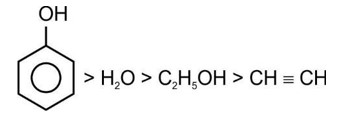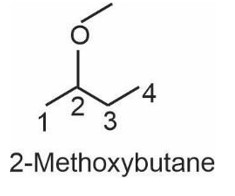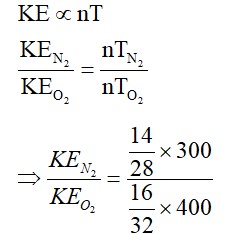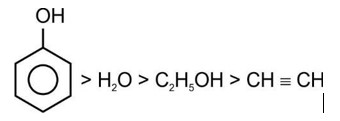11.74 Name the reagents used in the following reactions: (i) Oxidation of a primary alcohol to carboxylic acid. (ii) Oxidation of a primary alcohol to aldehyde. (iii) Bromination of phenol to 2,4,6-tribromophenol. (iv) Benzyl alcohol to benzoic acid. (v) Dehydration of propan-2-ol to propene. (vi) Butan-2-one to butan-2-ol.
11.74 Name the reagents used in the following reactions: (i) Oxidation of a primary alcohol to carboxylic acid. (ii) Oxidation of a primary alcohol to aldehyde. (iii) Bromination of phenol to 2,4,6-tribromophenol. (iv) Benzyl alcohol to benzoic acid. (v) Dehydration of propan-2-ol to propene. (vi) Butan-2-one to butan-2-ol.
-
1 Answer
-
11.74
1. Acidified KMnO4 (potassium permanganate)
Potassium permanganate is a strong oxidant and is able to react with many functional groups. Here KMnO4 will readily react with primary carbon (where hydrogen is attached) and transforms that to acid.
2. PCC (Pyridinium Chlorochromate)
This is actually a milder version of chromic acid. This works as a sort of elimination reaction. The formation of aldehyde occurs because of the action chromium (a good leaving group) which will be replaced when the C-H bond is broken.
3. Bromine water
Bromine water is actually an aqueous form of bromine. Here in aqueous solution, phenol ionizes to f
...more
Similar Questions for you
Rainbow is formed due to internal reflection and dispersion.
Correct order of acidic strength
Correct order of acidic strength
Taking an Exam? Selecting a College?
Get authentic answers from experts, students and alumni that you won't find anywhere else
Sign Up on ShikshaOn Shiksha, get access to
- 65k Colleges
- 1.2k Exams
- 679k Reviews
- 1800k Answers







